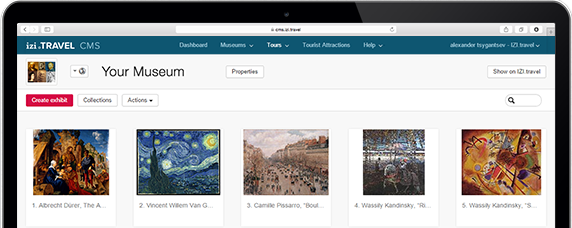The Basilica of St.Petronio
Update Required To play the media you will need to either update your browser to a recent version or update your Flash plugin.
The Basilica of San Petronio is the most famous and important church in Bologna, situated in the main city square, Piazza Maggiore. This is the fourth largest church in Italy and the sixth largest in Europe. It is the last large example of the late Gothic style of architecture in Italy.
It is dedicated to Bolgona’s patron, Saint Petronius, who was the bishop of the city in the Vth century. The relics of the saint were moved to the Basilica in 2000 from the Church of Santo Stefano.
The construction of the Basilica began in 1390 but it was not consecrated until 1954. The façade remains incomplete even today. It is 60m high and 51m wide. The lowest part of the façade was built of white and red marble between the XIVth and XVIth centuries. In the XVth century, the famous Italian sculptor, Jacopo della Quercia, was working on the decoration of the central part of the façade and the main church portal. The rest of the façade was left unfinished because of the long discussions about the architectural style and financial problems, so today part of the façade is simply made of brick.
According to the original project, the church should have been much larger than it is today but, as the construction lasted for centuries, the projects changed several times. In the XVIth century, for example, its architect wanted San Petronio to be the largest Christian church in the world as Bologna was one of the richest, most important cities in Europe at that time, mainly due to its university. That project was not realized. All of the projects and models related to the Basilica can be seen today in the Museum within it, on the left side of the altar.
One of two bronze statues by Michelangelo (the other one, of David De Rohan, was lost) was placed in San Petronio in 1508 and depicted Pope Julius II, but was later destroyed by the city authorities, who were persecuted by this Pope.
In 1530, the coronation of Charles V, the Holy Roman Emperor, was held here, as Bologna became the second most important city in the Papal States.
Inside the Basilica, you can see a XVIIth century sundial on the pavement to the left of the entrance.
The organs of the church are the most ancient in Italy. The one on the right side of the altar is the oldest in the world, a work by Lorenzo da Prato realized in 1471-1475.
The most famous fresco in the church is situated in the Bolognini Chapel in the left nave – it is a work by Giovanni da Modena entitled “Hell”, where the Muslim prophet Mohammed is depicted in hell together with Lucifer. This theme led to several attempts to attack the church by Muslim activists.
It is dedicated to Bolgona’s patron, Saint Petronius, who was the bishop of the city in the Vth century. The relics of the saint were moved to the Basilica in 2000 from the Church of Santo Stefano.
The construction of the Basilica began in 1390 but it was not consecrated until 1954. The façade remains incomplete even today. It is 60m high and 51m wide. The lowest part of the façade was built of white and red marble between the XIVth and XVIth centuries. In the XVth century, the famous Italian sculptor, Jacopo della Quercia, was working on the decoration of the central part of the façade and the main church portal. The rest of the façade was left unfinished because of the long discussions about the architectural style and financial problems, so today part of the façade is simply made of brick.
According to the original project, the church should have been much larger than it is today but, as the construction lasted for centuries, the projects changed several times. In the XVIth century, for example, its architect wanted San Petronio to be the largest Christian church in the world as Bologna was one of the richest, most important cities in Europe at that time, mainly due to its university. That project was not realized. All of the projects and models related to the Basilica can be seen today in the Museum within it, on the left side of the altar.
One of two bronze statues by Michelangelo (the other one, of David De Rohan, was lost) was placed in San Petronio in 1508 and depicted Pope Julius II, but was later destroyed by the city authorities, who were persecuted by this Pope.
In 1530, the coronation of Charles V, the Holy Roman Emperor, was held here, as Bologna became the second most important city in the Papal States.
Inside the Basilica, you can see a XVIIth century sundial on the pavement to the left of the entrance.
The organs of the church are the most ancient in Italy. The one on the right side of the altar is the oldest in the world, a work by Lorenzo da Prato realized in 1471-1475.
The most famous fresco in the church is situated in the Bolognini Chapel in the left nave – it is a work by Giovanni da Modena entitled “Hell”, where the Muslim prophet Mohammed is depicted in hell together with Lucifer. This theme led to several attempts to attack the church by Muslim activists.
Ladda ner appen izi.TRAVEL gratis
Skapa dina egna ljud-turer!
Användningen av systemet och den mobila guide-appen är helt gratis

